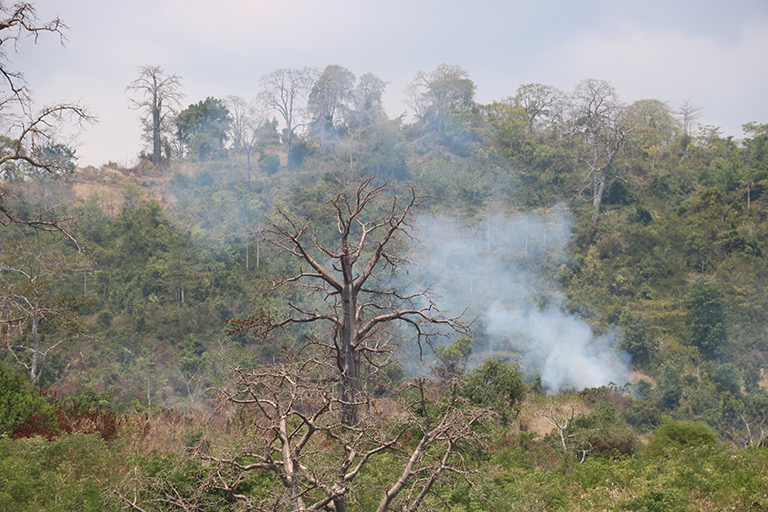Skip to main content
Contribution of human activities to climate change

Climate change is resulted to two factors either natural or human activities and its believed that human activities contributes majority to green house. bush fire, overgrazing of pastoral and human activities in Agriculture.a seasonal plume of smoke from agricultural and forest fires that gets lofted by the prevailing winds. As part of our campaign our aim was to better understand how all that smoke over the ocean affects the amount of sunlight that gets absorbed in the atmosphere and at Earth’s surface.Aerosols—small airborne particles, like smoke, desert dust, and sulfates from power plants—affect the amount of energy the southeastern Atlantic Ocean gets from the sun, not only by absorbing and reflecting sunlight directly, but also through its effects on clouds. A large expanse of very bright low clouds and a smoke can change the properties of these clouds in various ways, including brightening the clouds by creating lots of small droplets, which, interestingly, make the clouds less likely to drizzle and thus stick around for a longer time. Both of those changes allow the clouds to reflect more sunlight, creating a cooling effect.
As anyone who’s been outside on an overcast day knows, clouds play a major role in regulating the amount of the sun’s energy that gets to Earth’s surface, so any changes in the clouds. It is well-known that the heat-trapping effect of man-made greenhouse gas emissions have led to a net warming over the 20th and early 21st centuries. However, unresolved scientific questions about the potential cooling effect.
The human population is still growing and needs space and resources. It is, therefore, not easy to reconcile development, biodiversity conservation and climate change mitigation efforts. Which areas can be allocated for development and what should be off-limits to conserve forests and biodiversity? And how do we ensure that stakeholders, including governments and the private sector, respect minimum standards for land use planning processes?
ReplyDeleteTwo tools are relevant here: one is the High Carbon Stock Approach, a new global methodology that helps answer such questions and implement No Deforestation commitments. It’s a land use planning tool focused on achieving No Deforestation. It integrates social considerations—local community customary rights, livelihoods and needs, high conservation values, peatlands, riparian zones and plantation operational aspects.
The other assessment tool is the High Conservation Values Approach. It focuses on biodiversity conservation rather than climate change mitigation. However, this approach does not address deforestation in degraded low-to-medium-density natural forests.
“I would strongly encourage both approaches to be used in parallel,” says Johannes Refisch, coordinator of UN Environment’s Great Apes Survival Partnership (GRASP). You can easily have areas which rank high on high carbon stock and low on high conservation values and vice-versa but they are worth protecting.”
Refisch points to a recent study on sustainable palm oil cultivation in Gabon which called for the application of both approaches (Austin et al, 2017).
In November 2017, proponents of the two approaches agreed to launch the Integrated Manual to address both issues in parallel.
Over 25 global organizations support the High Carbon Stock Approach
Members of the High Carbon Stock Approach are organizations which are committed to No Deforestation: plantation companies (such as New Britain Palm Oil Limited and Wilmar), commodity users (such as Unilever, Nestle and Procter & Gamble), non-governmental organizations (such as World Wildlife Fund, Greenpeace and Forest People Program), technical support organizations (such as Rainforest Alliance, The Forest Trust and ProForest), and smallholder groups. The initiative is also developing partnerships with the USAID – Bijak Program, World Resource Institute, World Cocoa Foundation and others.
Though starting with just a few, the number of members has now reached 27 global organizations and is still growing.
UN Environment supports the Roundtable for Sustainable Palm Oil, which recently endorsed the approach.
“In November 2018, the Roundtable on Sustainable Palm Oil made a big leap forward to address deforestation by requiring the High Carbon Stock Approach in its certification standards, and as further recognition, the French Government has referenced High Carbon Stock Approach in their importing deforestation strategy,” says prominent zero deforestation campaigner and High Carbon Stock Approach Advisor Aida Greenbury.